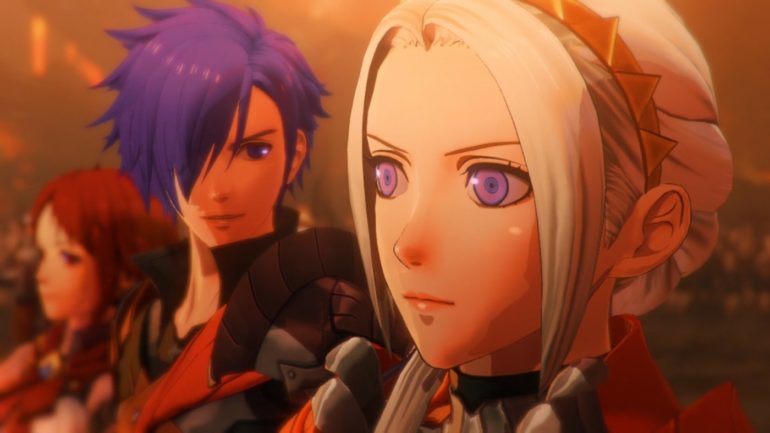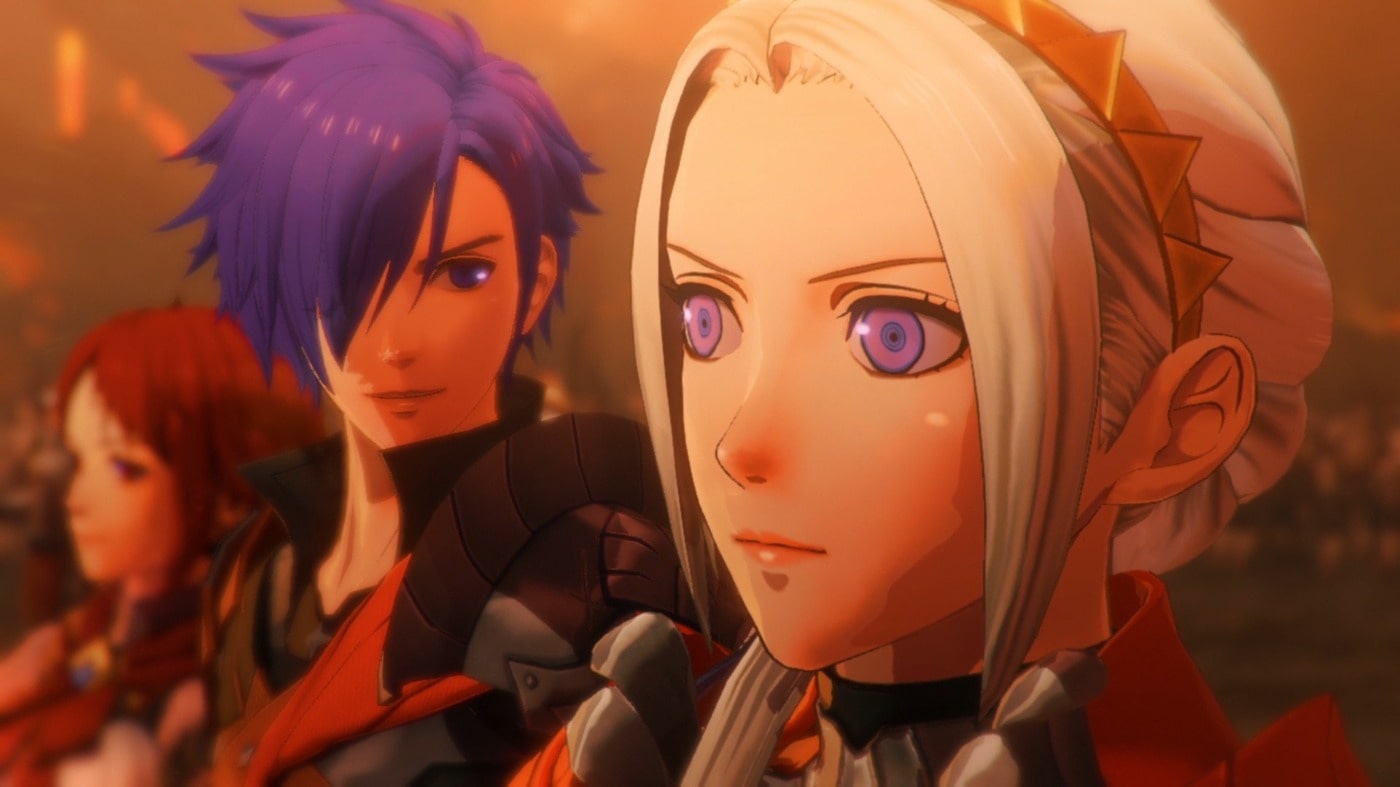There’s a lot of expectation associated with Fire Emblem Warriors: Three Hopes in a few ways. For starters, Fire Emblem: Three Houses – the very game it’s based on – is one of the strongest Fire Emblem games in the franchise, beloved by many as a return to form for the series while also including all the best elements of the 3DS entries. There’s also the weight brought along by the success of 2019’s excellent Hyrule Warriors: Age of Calamity, which set a new standard for what Musou spin-offs could achieve.
THE CHEAPEST COPY: $68 WITH FREE SHIPPING FROM AMAZON
While Fire Emblem Warriors: Three Hopes mostly succeeds on delivering an alternate take on Three Houses, it’s hard not to feel like some of the ideas here just don’t fit into the kind of formula Musou games are rooted in. That’s not to say it’s bad – there’s plenty here for fans of Three Houses, even more so for those who get deeply invested into the content these Warriors games offer, but there are elements of the overall experience that suffer once the repetition sets in.
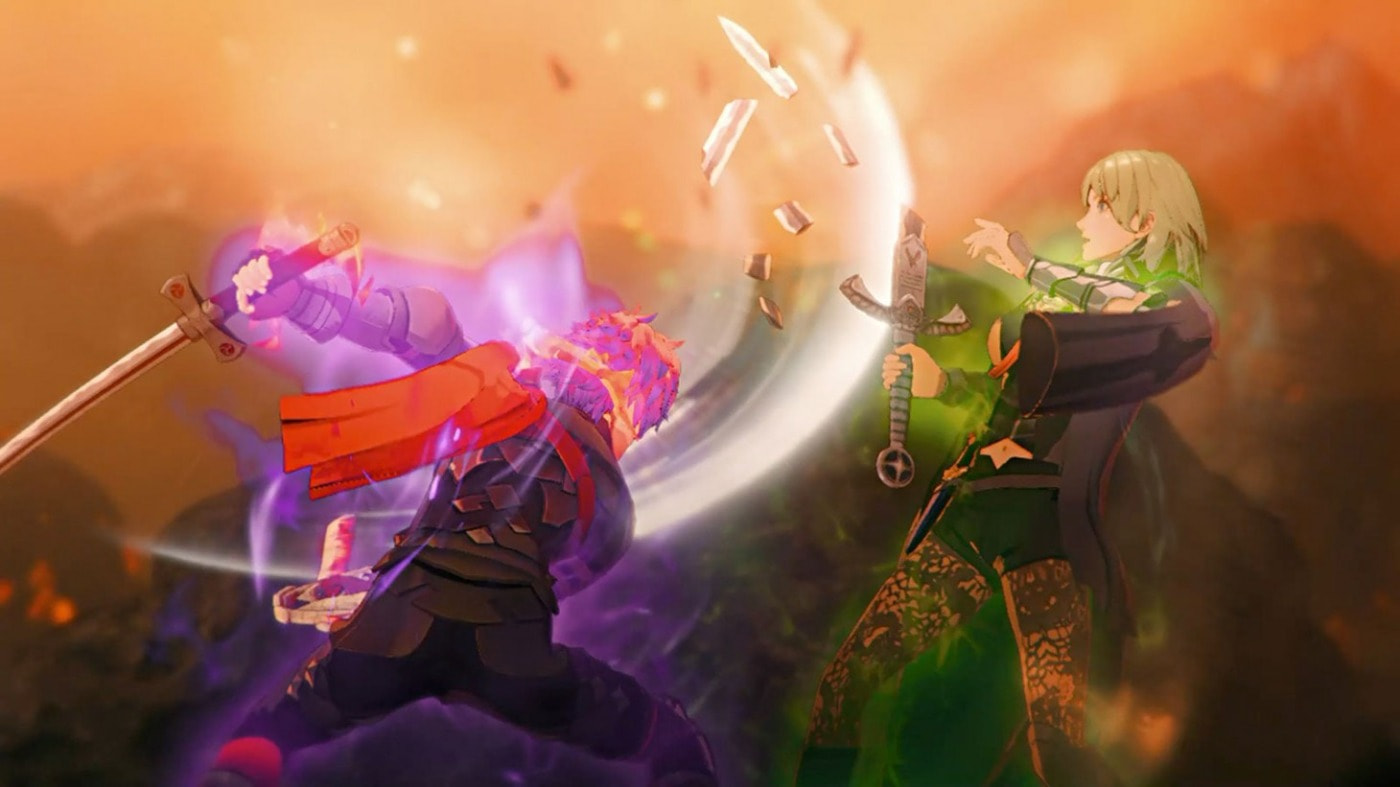
Serving as an alternate take on Three Houses, Three Hopes has a narrative that is mostly similar in structure and narrative beats to what is found in Three Houses. After completing a short tutorial battle, the player character, Shez, falls into an unexpected situation at Garrag Mach Monastery. With Shez looking to pickup the pieces and uncover the truth behind a being only they can communicate with known as Arval, you’ll pick one of the three houses to enroll into at Garrag Mach.
One of the best elements Three Houses brought to Fire Emblem was the ability to grow your relationship with the students at Garrag Mach, and Three Hopes is no different. While most of these characters initially come across as surface level or stereotypical, it’s these deeper dives into their personalities and who they are that fleshes them out and makes them such a fantastic cast to engage with.
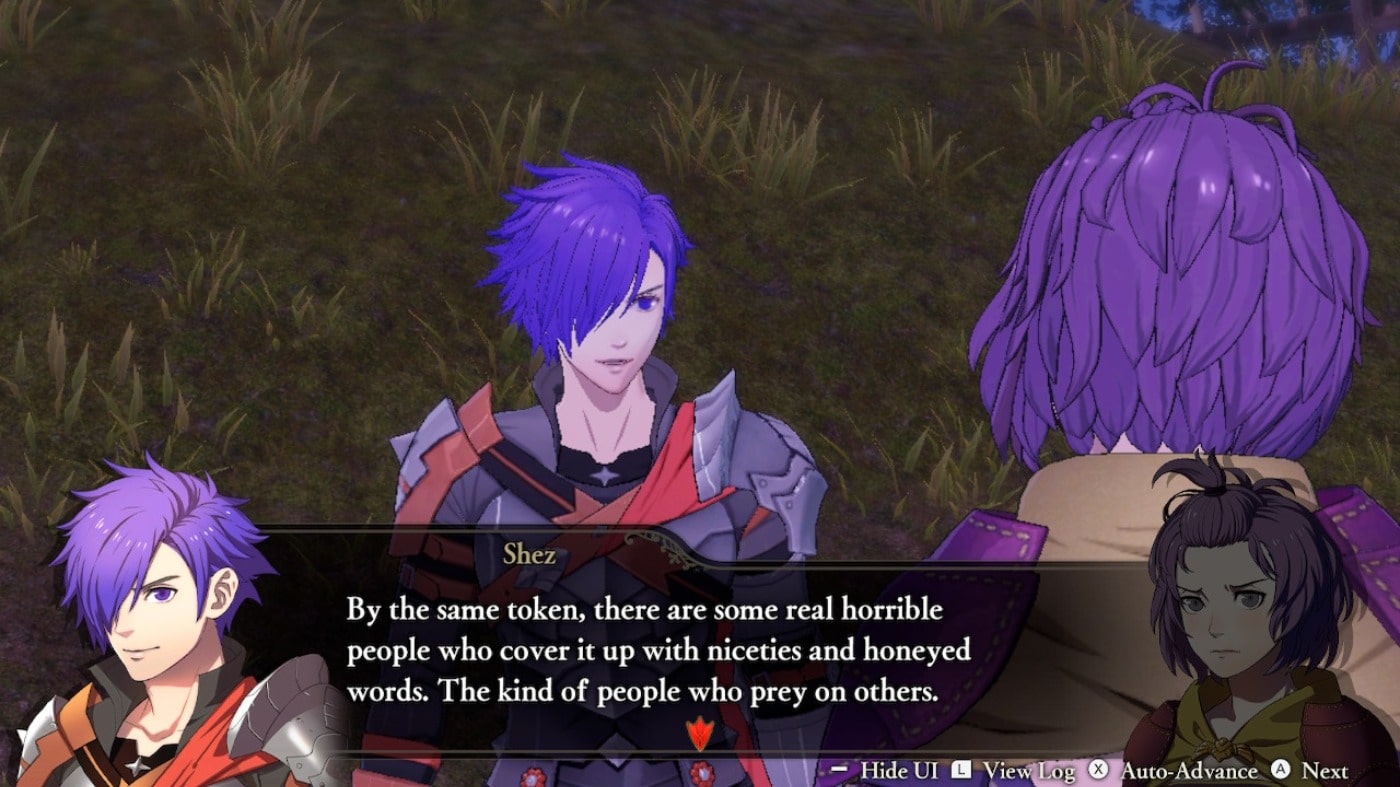
It’s clear that they all have different lineages and come from all walks of life, and even though I’d spent countless hours with them already in Three Houses, the new stuff brought along in Three Hopes was just as alluring, and always had me looking forward to the next support threshold. It’s a true treat to be back with this cast of characters again, and is easily one of the best aspects of Three Hopes.
I mentioned in my preview for Three Hopes that the overall narrative wasn’t doing a whole lot for me, but that I’d suspected it would quickly improve as the pace picked up towards the second half of the game. While there definitely was some improvement, there are a myriad of questions left unanswered after rolling credits on the Black Eagles route relating to Arval, Shez, and Byleth in particular.

There’s no doubt that the player is incentivized to replay Three Hopes multiple times in order to uncover all the answers, and to also view the conflict from a different perspective. The problem, is that Musou games don’t lend themselves particularly well to subsequent play-throughs, especially at the length of 20 or so hours long.
Because the bulk of the narrative is one that treads ground similar to that of which is found in Three Houses, I was ultimately left feeling underwhelmed in regards to the actual plot. While I’m sure it picks up if you’re willing to commit the time, Three Hopes simply isn’t designed for it when it feels like the first playthrough already overstays its welcome.
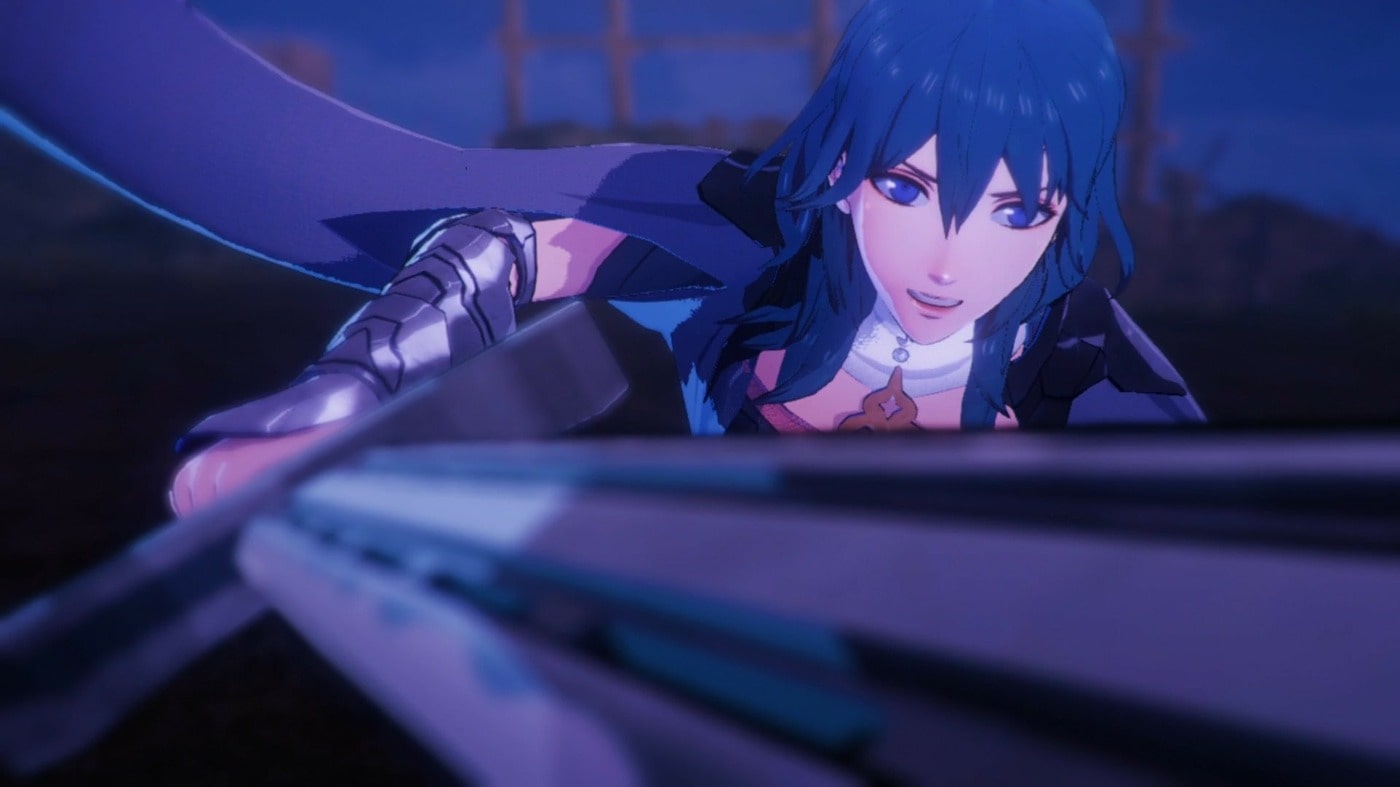
Much like Age of Calamity, Three Hopes looks to translate a lot of the mechanics and gameplay systems from Three Houses into a Musou framework, to varying degrees of success. The class system, for example, sees units progress down a non-linear tree of potential classes they unlock as they participate in class certification exams. This means the player is afforded a lot of flexibility into what each unit can do, but also means there’s less individuality between units. Move sets and the way characters play are defined by their class, not the character themselves.
This system is a joy to experiment with on a first playthrough, because it essentially means you can customize your army exactly how you want to. Specializing into particular classes with particular units, watching them grow in power, expanding their move sets as they progress further down the tree.
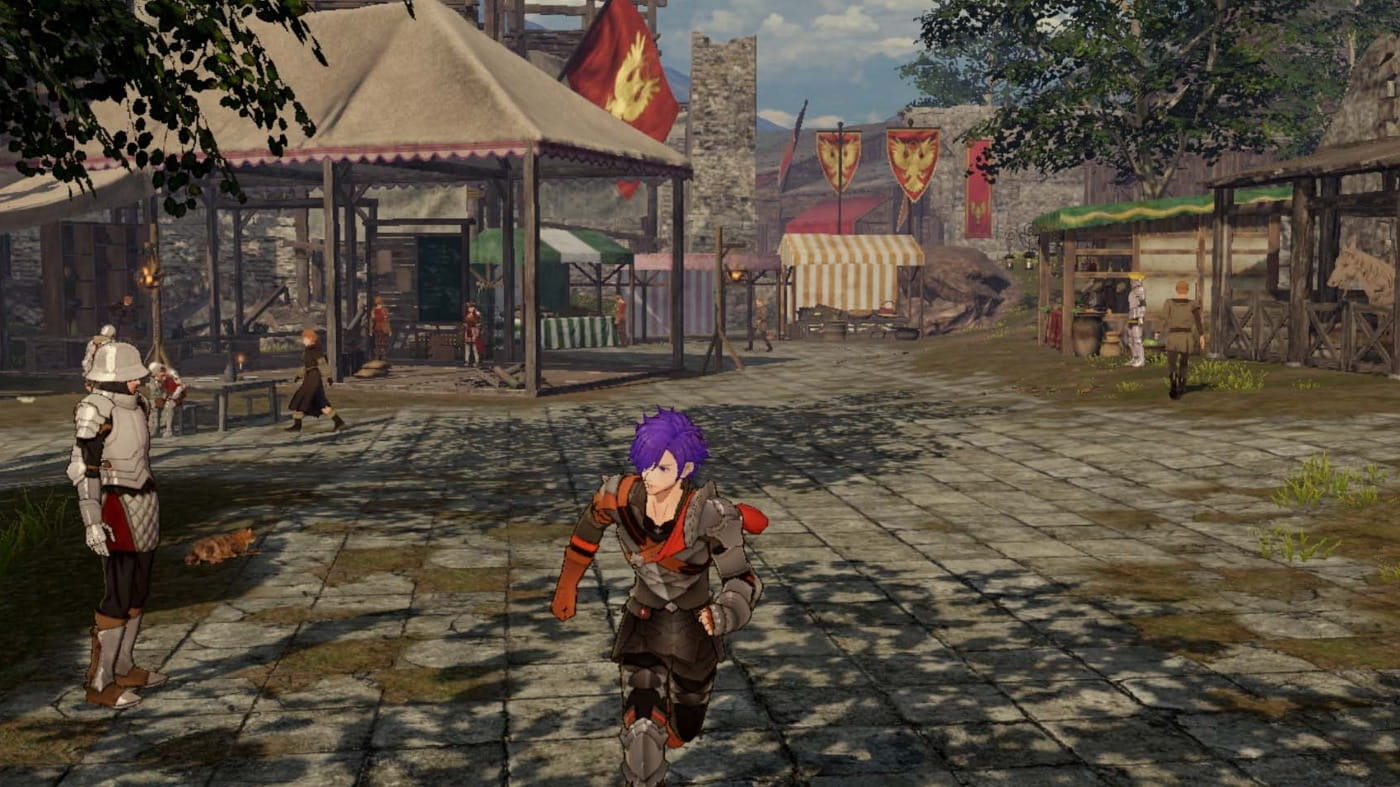
Where it suffers, though, is in the fact it effectively means all three routes play almost identically from a move set perspective, in a game where a lot of the core appeal comes from the power fantasy of playing suped-up versions of these characters. While not a bad system on its own, it painfully highlights the potential repetition towards the end of the game, which killed a lot of my motivation to dive right back in for another run.
That isn’t to say that your first play through is a bad one, though. While it gets off to a bit of a slow start, it eventually evolves into a more fully-realized Musou/strategy hybrid in-comparison to 2017’s Fire Emblem Warriors. It’s satisfying to appropriately pair up units via the Adjutant system and issue commands to them as you take to the fight with another character, as you switch and swap between your chosen units to accomplish objectives.
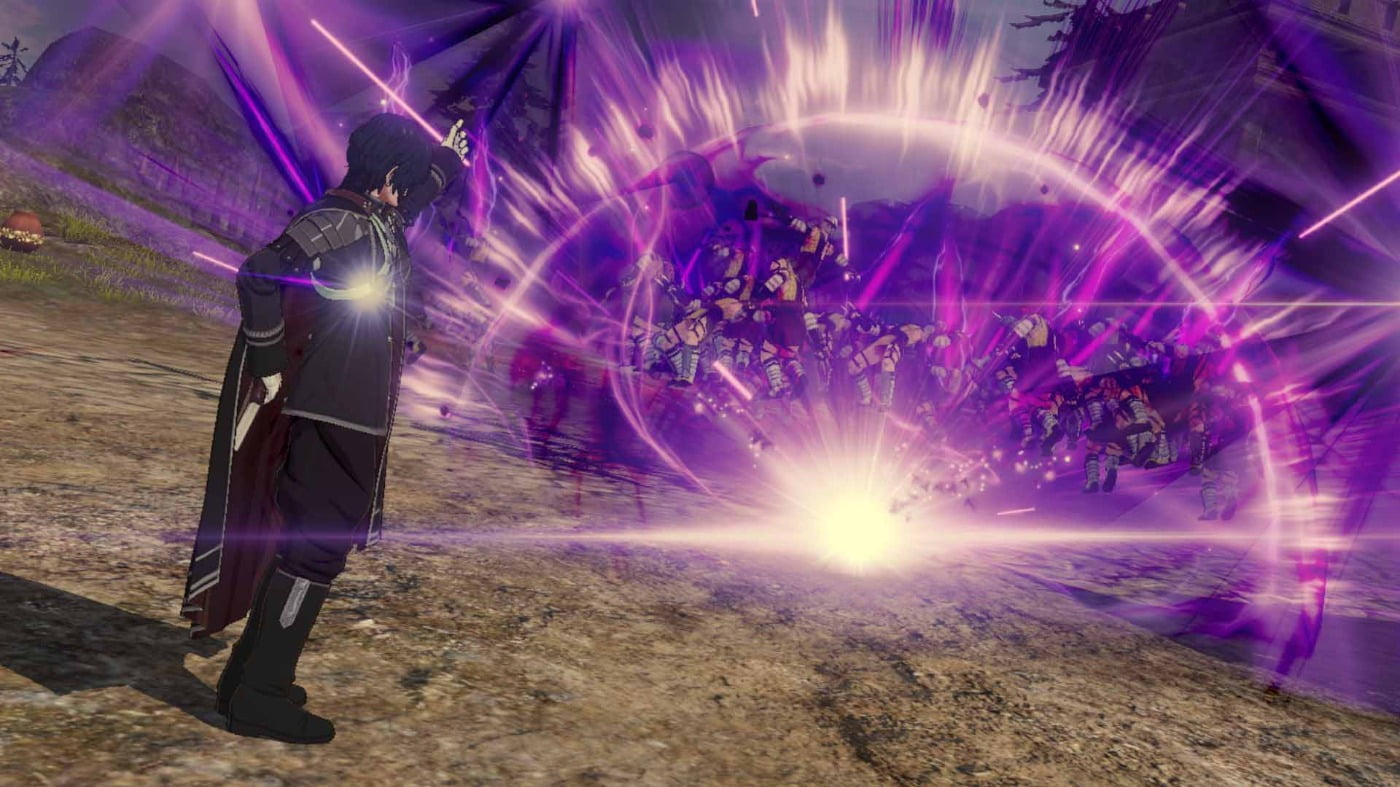
Battle itself is standard Warriors stuff, but where it really gets interesting is once you start delving into deeper classes, and look to synergize unit abilities and Adjutants together. The hack n’ slash stuff here is all well and good, but battle is at its most engaging when you’re thinking about which units need to go where in order to take advantage of weaknesses and enemy formations. Three Hopes gives you more control over AI units than ever, and even though they’re relatively useless when they aren’t given something to do, it accentuates the idea you’re commanding a small army.
Weaknesses are something I was also a big fan of in Three Hopes. Enemies are weak to particular weapon types depending on which class they are similar to Three Houses, as opposed to the typical Fire Emblem weapons triangle. It forces you to not only bring a wide array of units to cover all of your bases, but to also think outside the box when challenged by a tough enemy with multiple weaknesses. Do you want to commit your whole team to bring it down as fast as you can? Or is it maybe better to cycle units in and out to retain focus on other parts of the battlefield. This is all stuff I never got tired of, and it was a refreshing break from the endless hack n’ slashing.
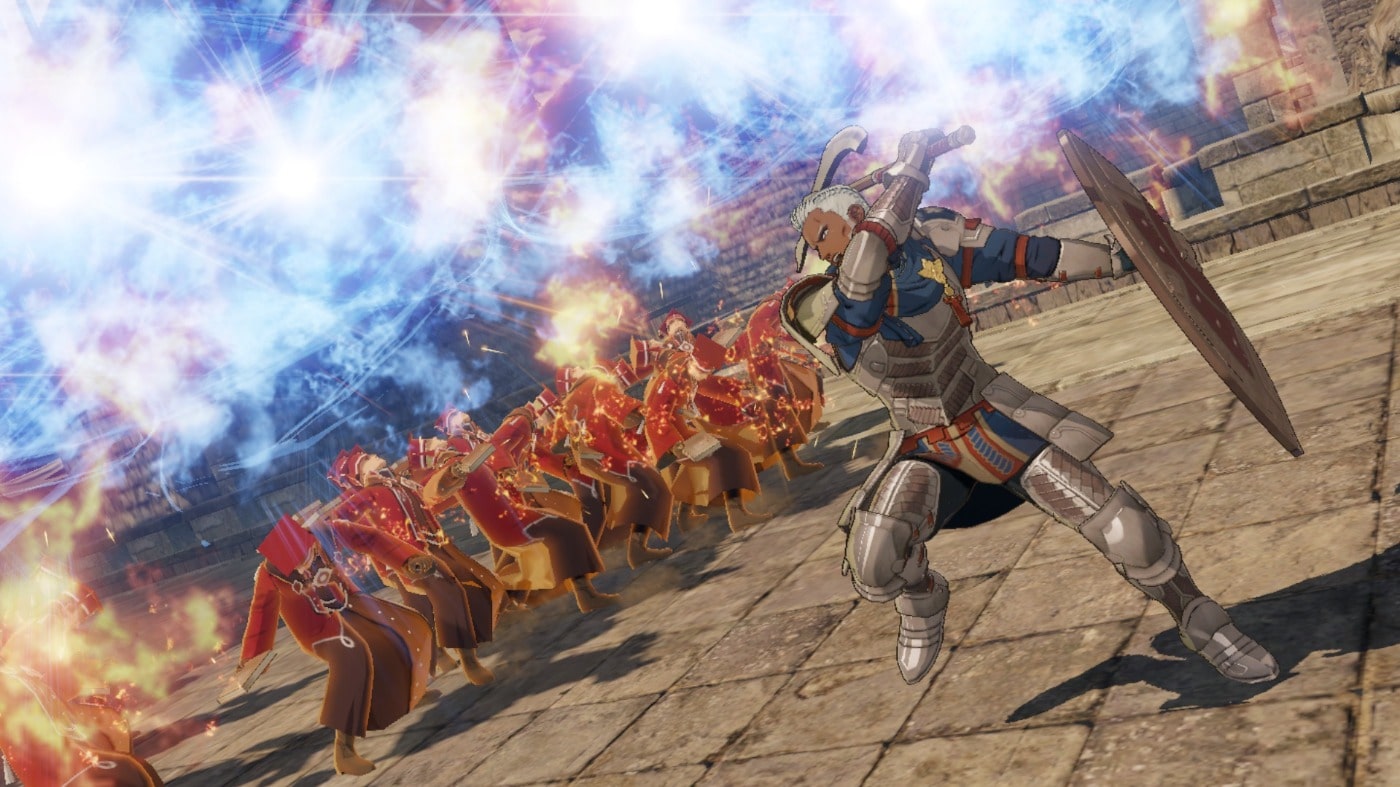
Each chapter takes place within a smaller region of Fódlan, broken up into even smaller battlefields. Every one has a main conflict you’ll work towards to reach the next chapter, but these can only be undertaken when surrounding land is seized via the Side Missions they offer, battles that are smaller in-scale, but often net rewards.
The number of Side Missions in each chapter steadily goes up as the game progresses, but there’s a nice degree of flexibility here for those who want it. Do you forge a path straight to the main conflict and do only the necessary Side Missions, or do you spend the time to complete all of them to earn extra rewards, bolstering your army and progression further? You can even unlock special bonuses to aid you in that chapter’s main conflict, or weapons that you normally wouldn’t come across, making them almost always worthwhile, but never forced thanks to the other tools Three Hopes has in regards to character progression.
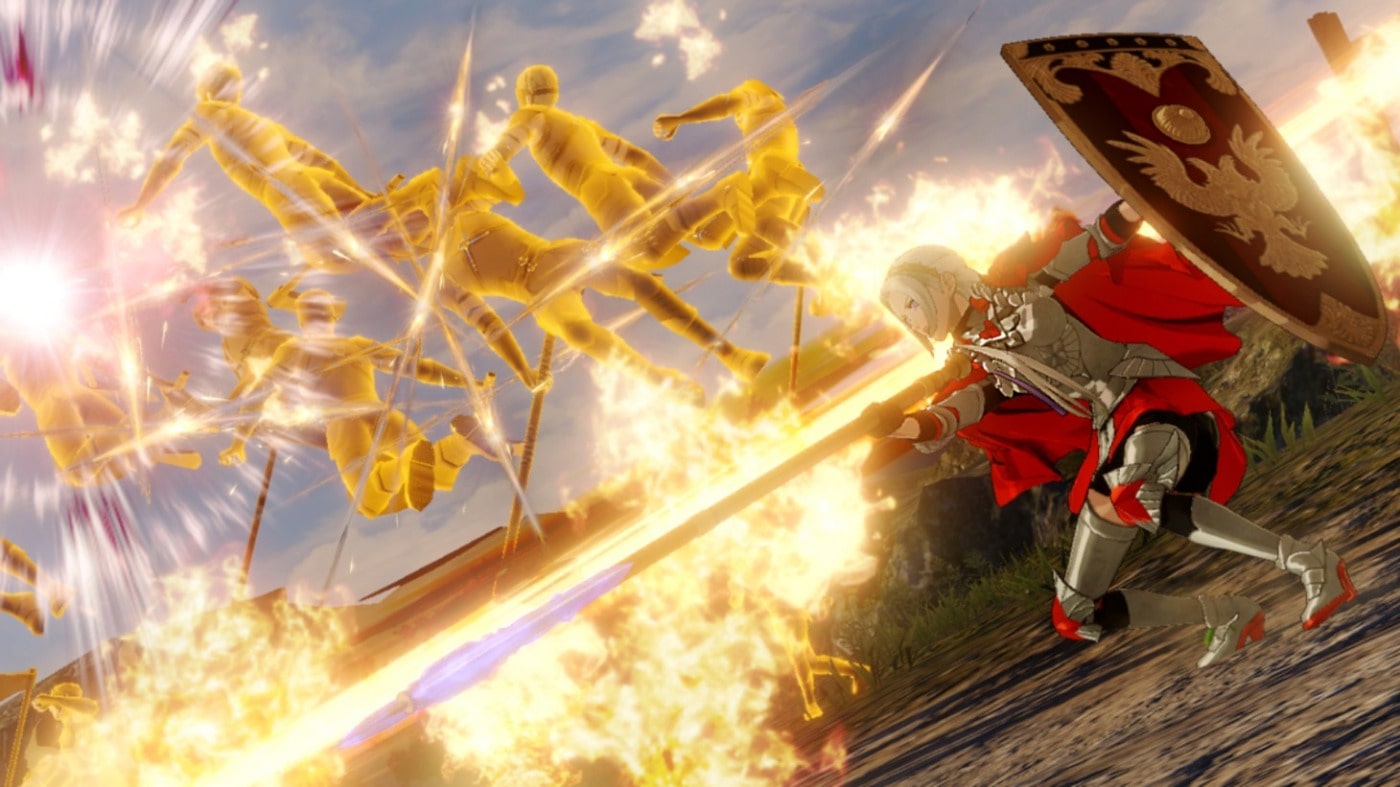
One thing Three Houses was almost universally praised for was the social sim elements and the way that they directly impact gameplay. Three Hopes converts much of the same efforts, where between battles you can spend time with other students to improve support levels with Shez or other students, increasing their support capabilities when paired up as an Adjutant. The catch, though, is that there’s a limited number of actions per chapter, and you’ll always have to pick and choose between who you want to see grow.
It provides a little more decision making between battles, and by no means makes other units arbitrary or useless. In-fact, you also gain a certain number of training actions that can be used to improve class proficiency on units you don’t use as much. You can also spend gold to gain levels up to where Shez is currently at, meaning you can constantly try out new units and class setups as long as you have the resources. My only real gripe with these systems is that they function almost identically to how they do in Three Houses, but if it ain’t broke, don’t fix it rings true here.
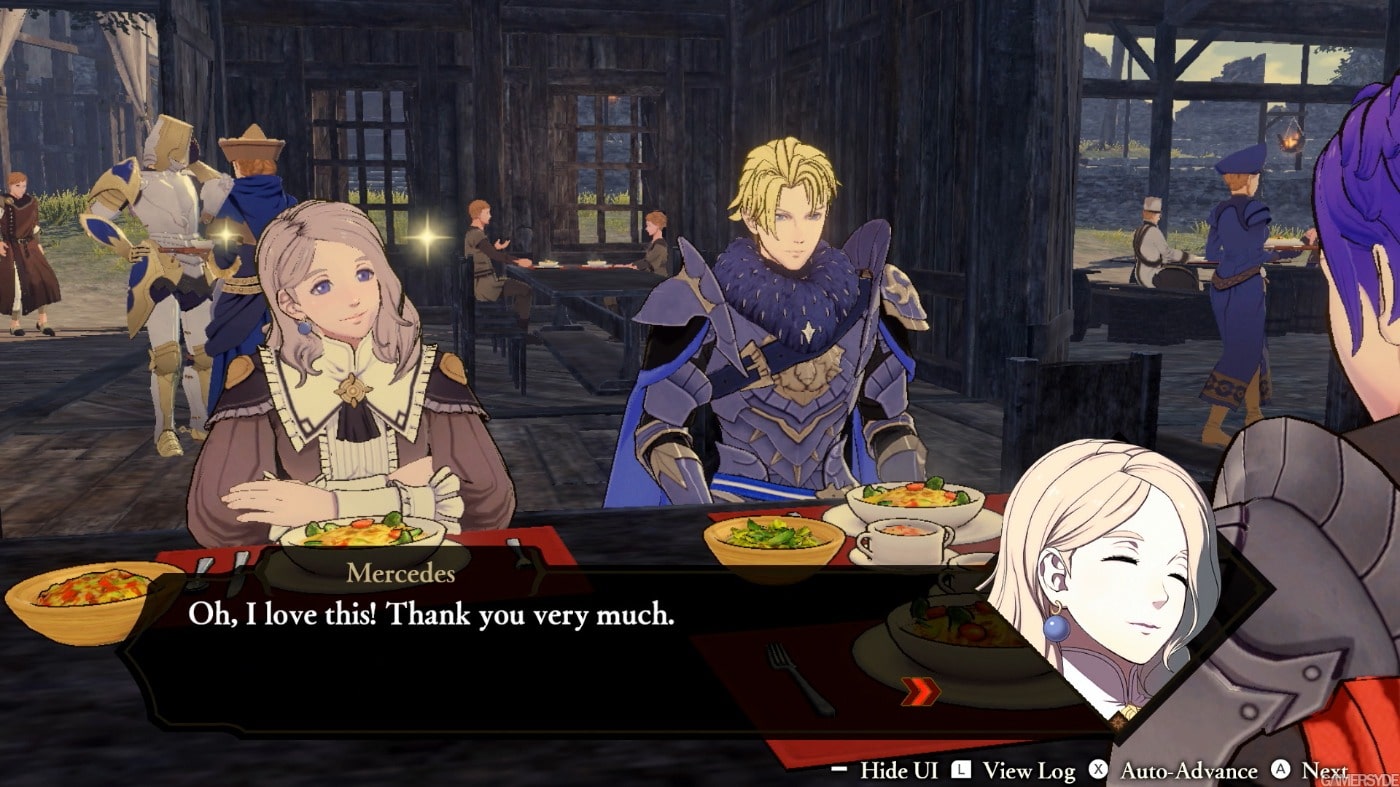
Unfortunately, one area where Three Hopes really struggles is in its production values. Aside from having an excellent soundtrack, killer CG cutscenes, and some nice character models, it doesn’t have much else going for it. The environments for the most part are bland and lacking in detail, with muddy textures and overly sharp edges drawing your attention away from the action.
Performance is similarly frustrating, where handheld mode tends to hold around 30 frames per second, with docked trying to target a higher 60, but hardly ever reaching it. It goes without saying that playing in coop only worsens these conditions, which is a shame, because none of these Warriors games have taken advantage of such a strong idea.


